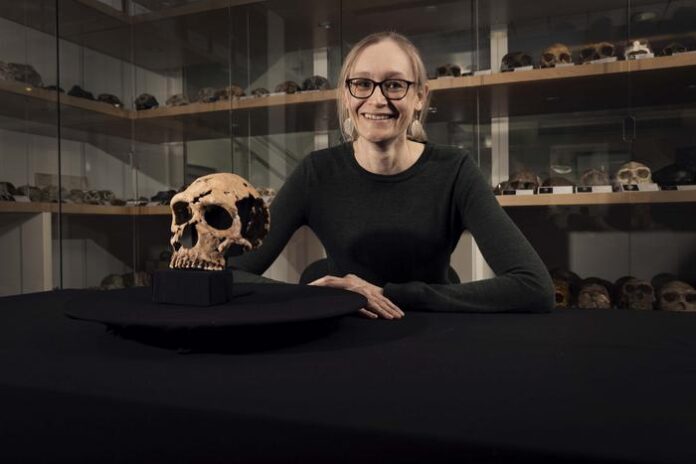Scientists recently reconstructed a Neanderthal skull that was both flattened like a pancake and shattered into pieces. The team then also used digital technology to create a 3-D approximation of the 75,000-year-old female Neanderthal’s face.
The archeologists suspect the woman’s head had been crushed — possibly by rockfall — after her death. Then layers of sediment deposited over thousands of years compacted it. The skull was about an inch thick when the archeologists found it.
Reconstructive Surgery
The team excavated the skull in 2018, from a cave in Iraqi Kurdistan. Several Neanderthal specimens had been found in that cave previously. The cave was discovered in the late 1950s and is believed to be a burial place.
After exposing the remains of a skeleton that the team named “Shanidar Z,” the archeologists used a glue-like substance to keep the pieces together. They did so in several blocks, which also held sediment. They wrapped each block in foil and removed them from the site.
At a Cambridge lab, researchers took micro-CT scans of each block, slowly dissolved the substance that held the blocks together, then used the CT scans to identify, then remove, each fragment. Next, lead conservator Lucía López-Polín pieced together over 200 bits of skull pieces.
“It’s like a high-stakes 3D jigsaw puzzle,” Cambridge archeologist Emma Pomeroy said in a statement. She added that a single block could take two weeks to process.
Then they digitally scanned the skull, used software to fill in the blanks, then 3-D printed a head. Finally, artists specializing in recreating extinct entities sculpted a face using their understanding of anatomy.
Read More: The Fascinating World of Neanderthal Diet, Language and Other Behaviors
Life and Death of a Neanderthal
The team has looked at other clues to determine more about how Shanidar Z lived. Scientists sequenced DNA from her tooth enamel and determined that she was probably in her mid-forties. That, of course, meant she was hardy and had good survival skills, because that’s considered a long life for the era.
After Shanidar Z was found, scientists have detected tiny traces of charred food in the soil around the older body cluster. The presence of carbonized bits of wild seeds, nuts, and grasses suggest not only that Neanderthals cooked — they did so in the presence of their dead.
“The body of Shanidar Z was within arm’s reach of living individuals cooking with fire and eating,” Pomeroy said in a press release. “For these Neanderthals, there does not appear to be that clear separation between life and death.”
The University of Cambridge-led team’s efforts to first unearth the pieces, scan them, then put them together can be viewed in the Netflix documentary ‘Secrets of the Neanderthals,’ produced by BBC Studios Science Unit.
Read More: The Neanderthal Timeline Shows They Thrived for 400,000 Years, Then Disappeared
Article Sources
Our writers at Discovermagazine.com use peer-reviewed studies and high-quality sources for our articles, and our editors review them for accuracy and trustworthiness. Review the sources used below for this article:
Before joining Discover Magazine, Paul spent over 20 years as a science journalist, specializing in U.S. life science policy and global scientific career issues. He began his career in newspapers, but switched to scientific magazines. His work has appeared in publications including Science News, Science, Nature, and Scientific American.
Source : Discovermagazine













